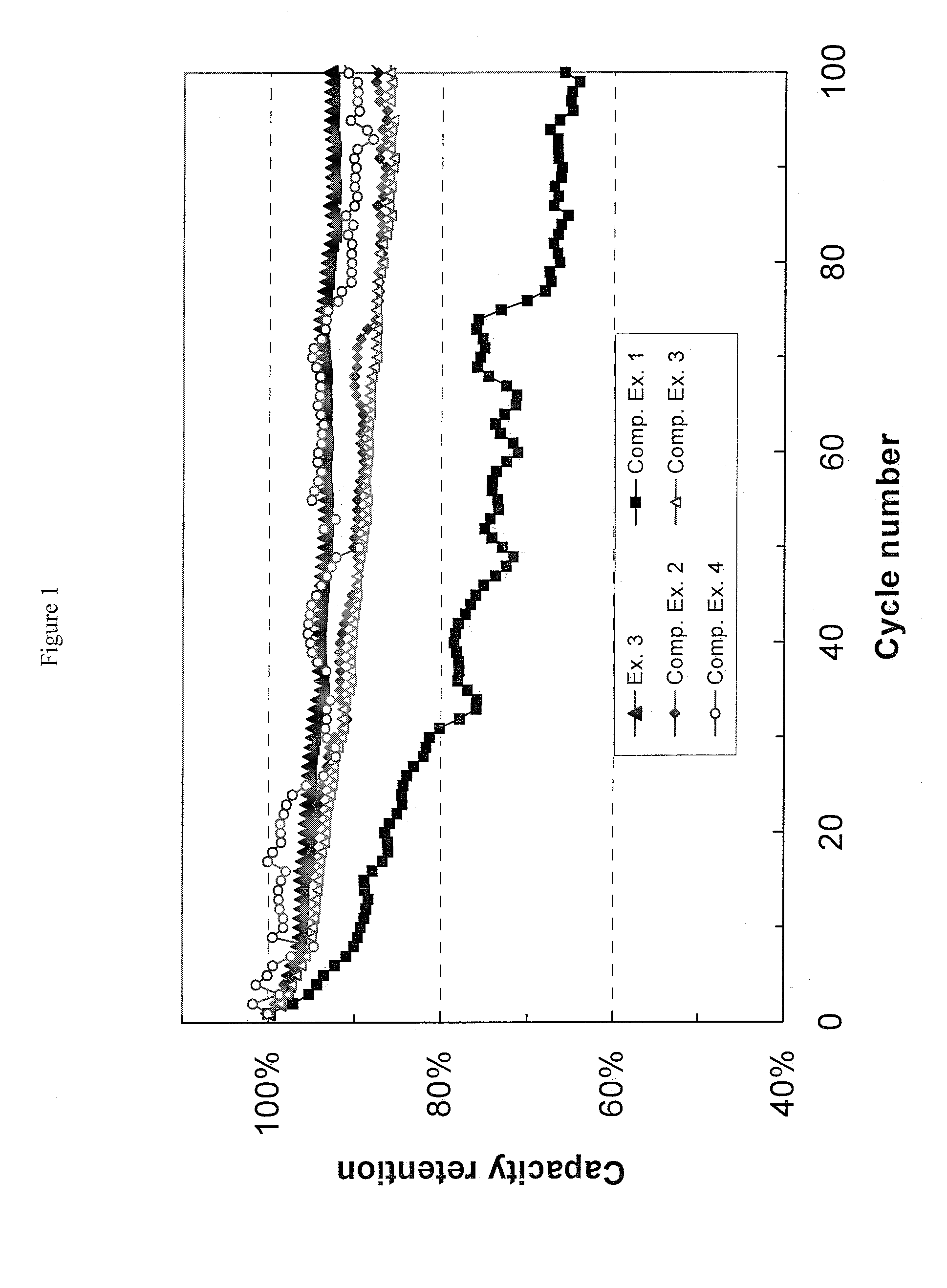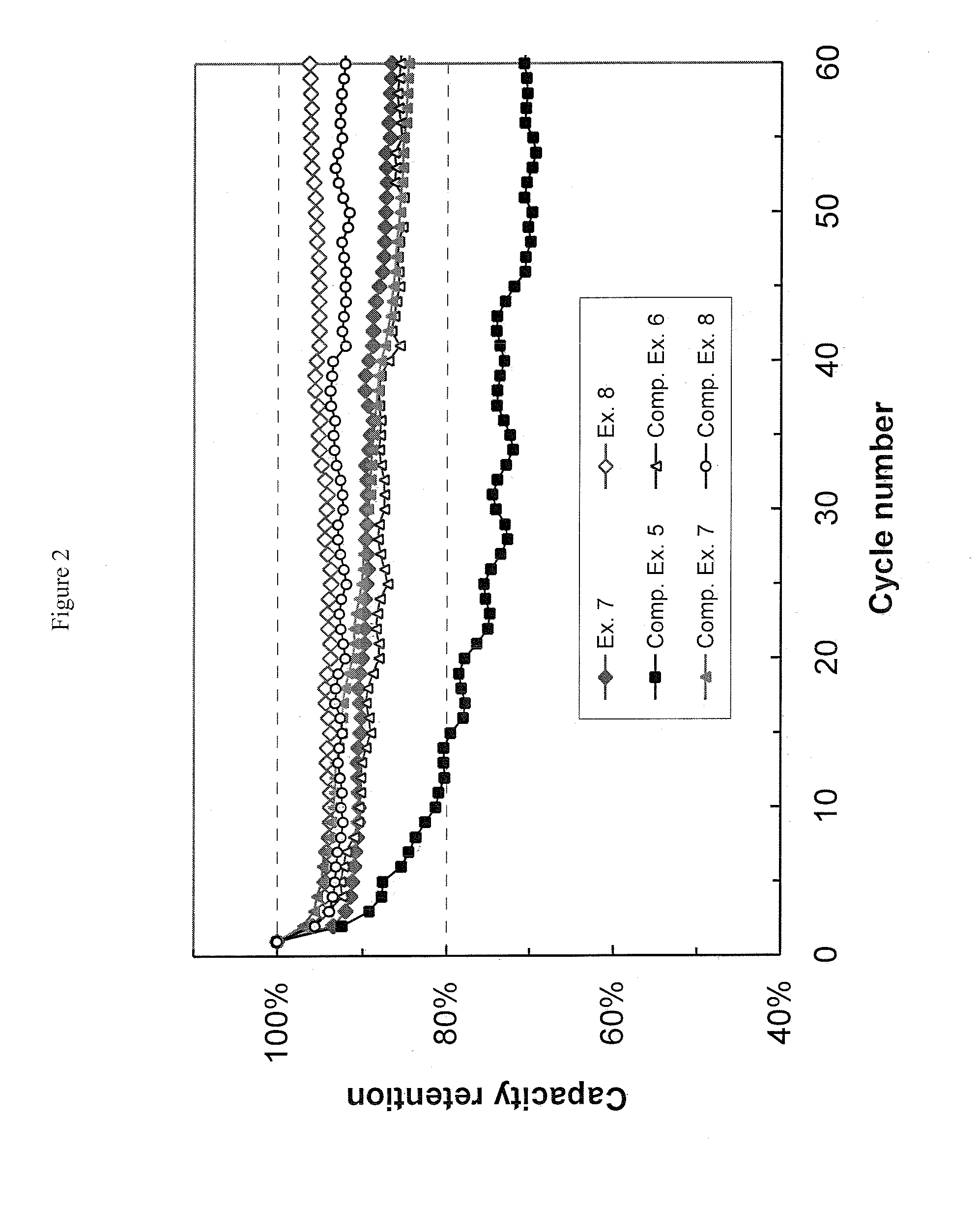Non-Aqueous Electrolytic Solutions And Electrochemical Cells Comprising The Same
a technology of electrolysis solution and electrochemical cell, which is applied in the direction of non-aqueous electrolyte cell, cell components, sustainable manufacturing/processing, etc., can solve the problems of limited performance of lithium ion batteries containing ec-based electrolytes in low temperature applications, insufficient protection from conventional electrolytes with simple formulations such as lipf/sub>6 /sub> in mixtures of ec and linear carbonates, and insufficient initial discharg
- Summary
- Abstract
- Description
- Claims
- Application Information
AI Technical Summary
Benefits of technology
Problems solved by technology
Method used
Image
Examples
examples
[0057](1) Preparation of Electrolytic Solutions. Ethylene carbonate (EC) and ethyl methyl carbonate (EMC) were mixed in a volume ratio of 3:7 to prepare a non-aqueous organic solvent mixture. To this mixture, 1.0M lithium hexafluorophosphate (LiPF6) was added to give the Electrolytic Solution A. Various additives were added into Electrolytic Solution A at different amounts to give Examples 1 to 6 and Comparative Examples 1 to 4 as shown in Table 2. The comparative examples represent the prior art, and are not part of the invention. The additives used are: methyleneethylene carbonate (i.e. 4-methylene-1,3-dioxolan-2-one), vinylene carbonate, vinylethylene carbonate, fluoroethylene carbonate. All exemplary solutions were formulated at ambient temperature (ca. 23° C.).
TABLE 2Electrolyte Samples from Electrolyte Solution AAdditiveExampleAdditive NameAmountExample 1Methyleneethylene carbonate0.1 wt %Example 2Methyleneethylene carbonate0.5 wt %Example 3Methyleneethylene carbonate1.0 wt %E...
PUM
 Login to View More
Login to View More Abstract
Description
Claims
Application Information
 Login to View More
Login to View More - R&D
- Intellectual Property
- Life Sciences
- Materials
- Tech Scout
- Unparalleled Data Quality
- Higher Quality Content
- 60% Fewer Hallucinations
Browse by: Latest US Patents, China's latest patents, Technical Efficacy Thesaurus, Application Domain, Technology Topic, Popular Technical Reports.
© 2025 PatSnap. All rights reserved.Legal|Privacy policy|Modern Slavery Act Transparency Statement|Sitemap|About US| Contact US: help@patsnap.com



